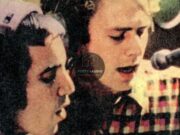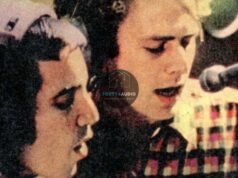Aja by Steely Dan, The Jazz-Rock Opus That Redefined Studio Perfection
When Aja landed in September 1977, it didn’t just mark a high point for Steely Dan – it quietly redrew the boundaries of what a studio album could be. With its seamless blend of jazz sophistication, rock cool, and lyrical mystique, Aja became a benchmark for audiophiles, musicians, and producers alike. For Donald Fagen and Walter Becker, the duo behind Steely Dan, it was the culmination of years of meticulous craftsmanship and a refusal to compromise.
This is the story of Aja – its historical roots, cultural resonance, and the rare details that make it a masterpiece worth revisiting on vinyl, in headphones, or through the warm glow of a tube amp.
The 1970s Music Scene and Steely Dan’s Studio Evolution
By the mid-1970s, Steely Dan had already carved out a unique space in American music. Their early albums – Can’t Buy a Thrill (1972), Countdown to Ecstasy (1973), and Pretzel Logic (1974) – blended rock, jazz, and pop with a sardonic lyrical edge. But after 1974, Becker and Fagen made a bold decision: they stopped touring altogether to focus exclusively on studio work.
This shift allowed them to pursue sonic perfection. They became known for hiring elite session musicians, recording dozens of takes, and obsessing over every detail. The result was a series of increasingly refined albums, culminating in Aja, their most ambitious and polished work to date.
Donald Fagen and Walter Becker, The Architects of Aja
Donald Fagen and Walter Becker met at Bard College in the late 1960s, bonding over a shared love of jazz, beat literature, and dark humor. Their songwriting partnership was built on contrast: Fagen’s sharp, cerebral lyrics and Becker’s biting wit created a voice that was both cool and emotionally complex.
Their influences ran deep – Miles Davis, Charles Mingus, Duke Ellington, and Thelonious Monk all left fingerprints on their harmonic choices and arrangements. But they also drew from rock, R&B, and soul, creating a hybrid sound that defied easy categorization.
Track-by-Track Breakdown of Steely Dan’s Aja Album
Each track on Aja is a world unto itself, featuring a rotating cast of top-tier musicians and layered arrangements that reward repeated listening.
Black Cow
The album opens with a laid-back groove and cryptic lyrics about betrayal and disillusionment. Tom Scott’s saxophone adds a smoky texture, while the rhythm section locks into a hypnotic funk. It’s a subtle but powerful introduction to the album’s themes of emotional detachment and longing.
Aja
The title track is a sprawling, seven-minute jazz fusion epic. Steve Gadd’s drum solo is legendary – fluid, explosive, and perfectly in sync with the song’s shifting time signatures. Wayne Shorter’s saxophone solo adds a layer of elegance and unpredictability. Aja is the album’s centerpiece, both musically and emotionally.
Deacon Blues
This track is often cited as Steely Dan’s most personal. The lyrics tell the story of a dreamer who embraces failure as a form of freedom: They call Alabama the Crimson Tide / Call me Deacon Blues. The horn arrangements are lush, and the groove is smooth but melancholic. It’s an anthem for outsiders and perfectionists alike.
Peg
With its infectious chorus and layered harmonies, Peg became one of the album’s biggest hits. Michael McDonald’s background vocals are instantly recognizable, and Jay Graydon’s guitar solo – chosen from dozens of takes – is a masterclass in precision. It’s pop perfection with a jazz heart.
Home at Last
Inspired by Homer’s Odyssey, this track reimagines Odysseus’s journey as a metaphor for modern alienation. Bernard Purdie’s Purdie Shuffle gives the song a rolling, syncopated feel, while the lyrics explore the tension between freedom and belonging.
I Got the News
This track is rhythmically complex and lyrically opaque, with a funky groove and tight vocal interplay. It’s one of the more enigmatic songs on the album, but its musicality is undeniable. Michael McDonald returns on backing vocals, adding depth and texture.
Josie
The album closes with Josie, a fan favorite that combines a tight groove with sharp, evocative lyrics. Larry Carlton’s guitar work is a highlight, and the track’s energy provides a satisfying conclusion to the album’s emotional arc.
Cultural Impact of Aja on Music and Production
Aja was a commercial and critical success, going platinum and earning a Grammy for Best Engineered Recording. But its true legacy lies in its influence.
Producers and engineers still reference Aja as a gold standard for mixing and mastering. Its analog warmth, dynamic range, and clarity make it a favorite for testing high-end audio equipment. Musicians across genres – from jazz to hip-hop – have cited it as an inspiration. Kanye West sampled Kid Charlemagne (from The Royal Scam) on Graduation, and MF DOOM referenced Steely Dan’s cryptic lyricism in his own work.
The album also helped define the yacht rock aesthetic, though Becker and Fagen would likely bristle at the label. Its smooth surfaces conceal deep emotional undercurrents, making it far more than background music for a coastal drive.
Rare and Lesser-Known Facts About Aja
- Over 40 session musicians played on the album, including legends like Joe Sample, Lee Ritenour, and Chuck Rainey.
- Steve Gadd’s drum solo on Aja was recorded in a single take – an astonishing feat given the song’s complexity.
- The identity of Aja remains a mystery. Some believe she was a Korean woman Becker once dated, but the duo never confirmed it.
- Dozens of guitar solos were recorded for Peg before Jay Graydon’s version was chosen. Becker and Fagen were known to reject solos that were technically perfect but lacked the right feel.
- The album was mixed entirely on analog tape, contributing to its rich, warm sound that continues to captivate audiophiles.
Steely Dan’s Discography and Solo Work Beyond Aja
After Aja, Steely Dan released Gaucho (1980), which pushed their perfectionism even further. The album’s production was famously grueling, and it marked the end of their initial run. The band went on hiatus until 2000’s Two Against Nature, which won four Grammys, including Album of the Year.
Donald Fagen’s solo debut, The Nightfly (1982), is considered a spiritual cousin to Aja – a nostalgic, meticulously produced album that explores themes of youth, technology, and Cold War anxiety. Walter Becker’s 11 Tracks of Whack (1994) is more introspective and raw, offering a glimpse into his personal struggles and musical sensibilities.
Becker passed away in 2017, but Fagen has continued to tour under the Steely Dan name, keeping the music alive for new generations.
Why Aja Still Matters
Aja endures because it rewards attention. It’s an album that reveals more with each listen – new textures, hidden harmonies, lyrical nuances. For vinyl collectors, it’s a must-have. For musicians, it’s a masterclass. For audiophiles, it’s a reference point.
But more than anything, Aja is a reminder that music can be both technically brilliant and emotionally resonant. It’s cool without being cold, complex without being alienating. It’s the sound of two artists chasing an ideal – and getting remarkably close.
Keep Listening, Keep Learning
If Aja has you rethinking what an album can be, you’re in good company. At forty4 Audio, we’re all about celebrating the records that changed the game – and the gear that brings them to life. Whether you’re spinning vinyl, building your hi-fi setup, or just discovering Steely Dan for the first time, we’re here to keep the conversation going.
Join the forty4 Audio community and explore more stories, gear guides, and curated listening sessions. Because great music deserves more than a passing listen – it deserves a deep connection.










































